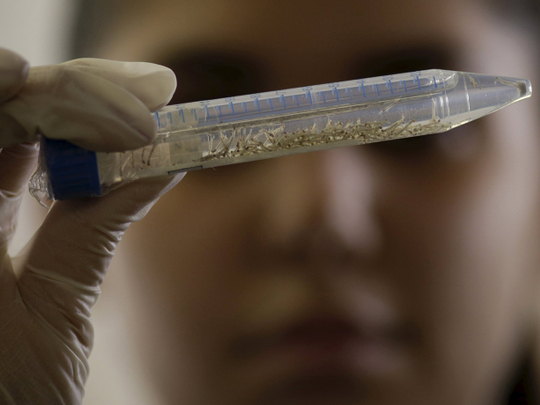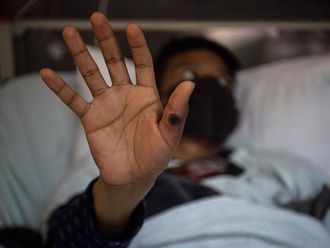
LUCKNOW: At least 89 people, including 17 children, have tested positive for the Zika virus in a surge of cases in the Indian city of Kanpur, its health department said on Monday.
First discovered in 1947, the mosquito-borne virus Zika virus reached epidemic proportions in Brazil in 2015, when thousands of babies were born with microcephaly, a disorder that causes babies to be born with abnormally small heads and underdeveloped brains.
“There has been a surge in cases of the Zika virus and the health department has formed several teams to contain the spread,” Dr Nepal Singh, chief medical officer of Kanpur district in India’s most populous state of Uttar Pradesh, told Reuters.
“There is one woman who is pregnant and we are paying special attention towards her. Cases have been reported in several Indian states in recent years, though Amit Mohan Prasad, Uttar Pradesh’s top government bureaucrat for health and family welfare, told Reuters this was the first outbreak in the state.
The first Zika case in the industrial city of Kanpur was detected on October 23 and the number of cases has increased over the past week.
“People are testing positive because we are doing very aggressive contact tracing,” said Prasad.
Authorities were increasing their surveillance of the outbreak and eliminating breeding grounds for the mosquitoes that transmit the virus, Singh said.
BHU researchers claim key finding in Zika virus treatment
Meanwhile, researchers at the molecular biology unit of the Institute of Medical Sciences in Banaras Hindu University (IMS-BHU) have reported an important finding on Zika virus pathogenesis, which they claim, will be helpful in understanding the molecular pathogenesis of the virus and in therapeutic development.
The study has been published in an international peer-reviewed journal ‘Molecular Neurobiology’.
Prof Sunit K. Singh, head of the Molecular Biology Unit and a well-known molecular virologist, said that most people with Zika virus infection do not develop symptoms.
“The incubation period of ZIKV infection lasts for 2- 7 days. In 2015, the major ZIKV outbreak was reported in Brazil, North America, Pacific and South-east Asia, infecting 1.5 million people and with more than 3,500 microcephaly cases reported in infants. In India, 157 ZIKV positive cases were reported in 2018,” he explained.
Currently, there are no definite antivirals against ZIKV and only symptomatic treatment regime is followed. Zika virus infection is also a trigger of Guillain-Barre syndrome, neuropathy and myelitis, particularly in adults and older children. The Zika virus vaccine is at various stages of development at present.
Zika virus can be transmitted from mother to foetus during pregnancy, which may lead to microcephaly (smaller than normal head size) and other congenital malformations in the infant, collectively referred to as congenital Zika syndrome, whereas in adults, the symptoms are mild-fever, headache, conjunctivitis, joint-pain, and body rash.
Microcephaly leads to abnormal brain development. The outcomes of microcephaly may differ according to the extent of the brain damage.
According to him, the brain is surrounded by a barrier known as blood-brain-barrier (BBB), which separates the brain from the peripheral blood circulation of the body. The BBB is formed by brain endothelial cells and these cells are held together by protein named tight-junction proteins (TJs) and adherent junction proteins (AJs).
If the TJs and AJs proteins expression decreases, the BBB is compromised and allows the movement of immune cells into the brain which causes neuronal damage.
The ZIKV infected cells secrete a viral protein, NS1, which has been directly corelated with the disease severity in patients.
His study reported that Zika virus NS1 protein treatment compromises the BBB integrity and this may lead to microcephaly and other brain related disorders in infants.
The research group reported that Zika virus NS1 protein increases the expression of microRNA-101_3p in human brain microvascular endothelial cells, which in turn suppresses the expression of tight-junction proteins and adherent junction proteins and that leads to the compromise in the integrity of BBB.
“This finding will be very helpful in understanding the molecular pathogenesis of Zika virus and in the therapeutic development. A diagnosis of Zika virus infection can be done by laboratory tests of blood, urine and semen,” said Singh.








